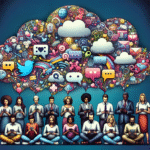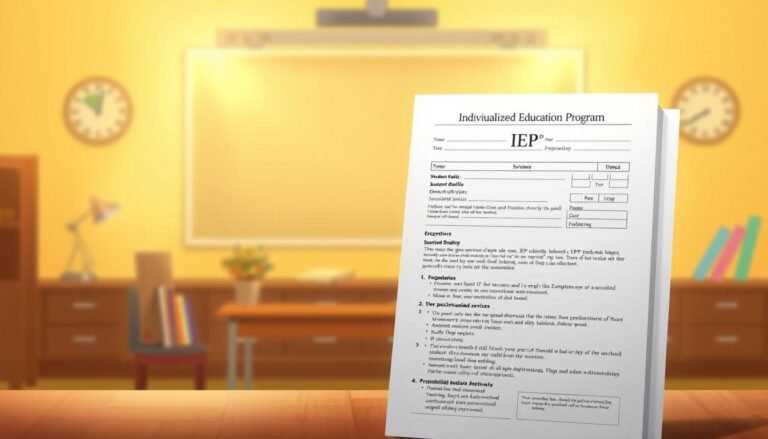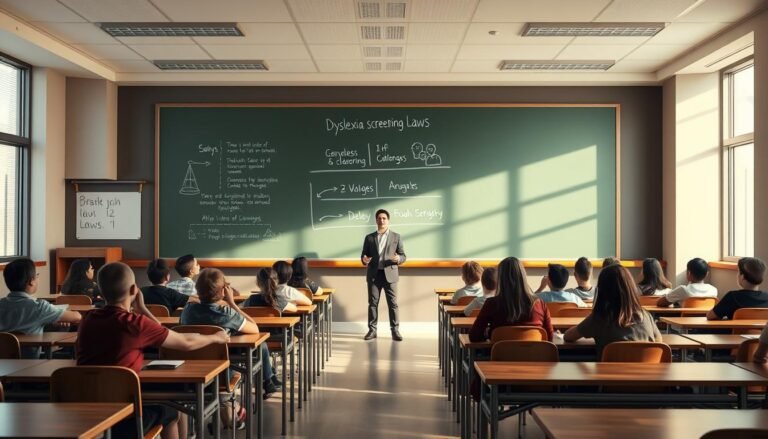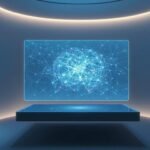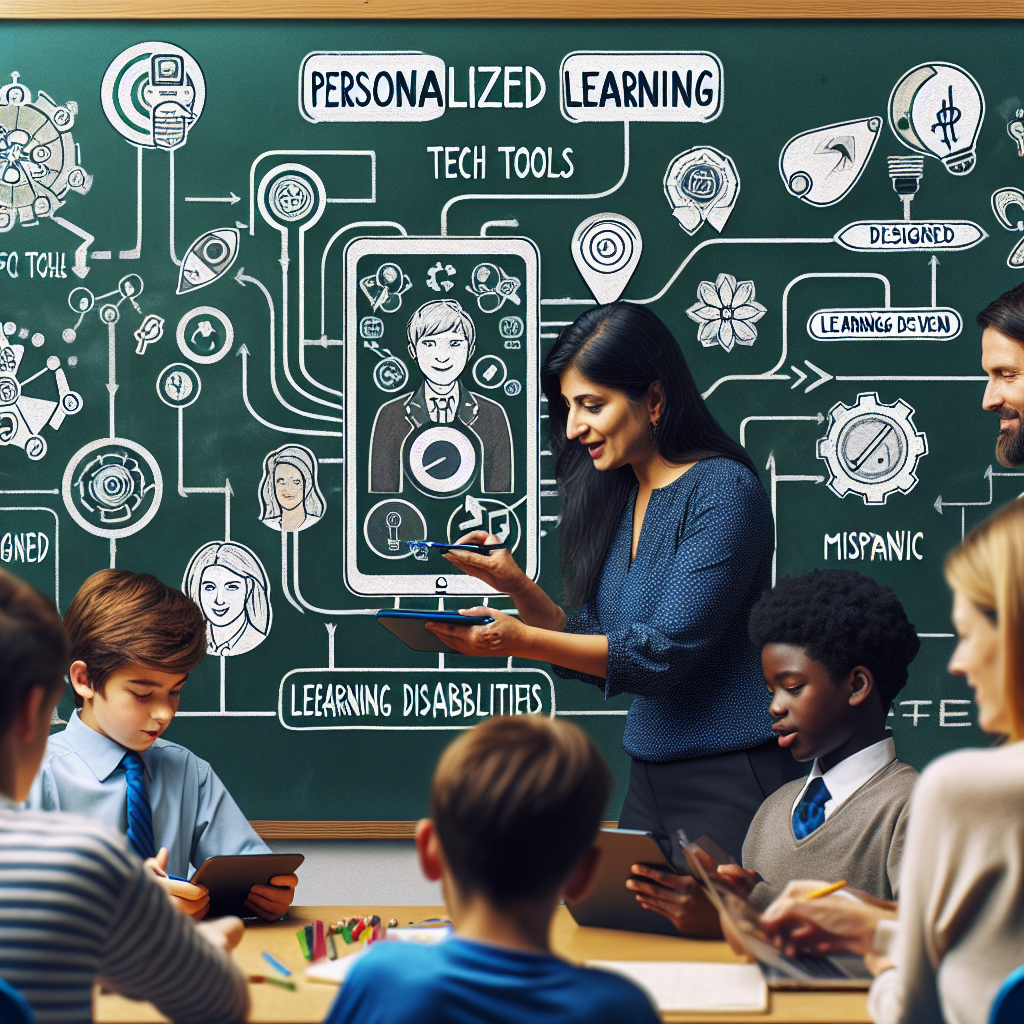
Personalized Learning: Exploring Tech Tools Designed for Students with Learning Disabilities
Introduction: A New Era in Education
In today’s rapidly evolving educational landscape, the concept of personalized learning has gained significant traction, especially when it comes to students with learning disabilities. As educators and technologists come together to craft innovative solutions, the possibilities for tailored educational experiences are becoming increasingly sophisticated. This article dives deep into Personalized Learning: Exploring Tech Tools Designed for Students with Learning Disabilities, shedding light on how technology can shape a more inclusive and effective learning environment. Through exciting case studies and insights, we’ll uncover the transformative impact of personalized tech tools on students who face unique learning challenges.
Understanding Personalized Learning
Personalized learning refers to a tailored educational approach that aims to meet each student’s individual needs, preferences, and interests. Unlike traditional one-size-fits-all education, personalized learning adapts to each learner’s pace and style, making it especially beneficial for those with learning disabilities. This flexibility fosters a sense of agency among students, empowering them to take control of their educational journey.
The Role of Technology in Personalized Learning
Technology serves as a significant enabler of personalized learning. It provides diverse methods for students to engage with content, demonstrates their understanding, and collaborates with peers and instructors. Some critical areas where technology facilitates personalized learning include:
- Adaptive Learning Platforms: These platforms adjust the level of difficulty and type of content based on student performance.
- Assistive Technology Tools: These tools help students navigate learning barriers, enabling them to access and interact with educational material.
- Data Analytics: Technology allows educators to analyze student data to identify strengths, weaknesses, and trends, which informs customized lessons.
The Importance of Tailored Tech Solutions for Students with Learning Disabilities
Why Personalized Learning Matters
Students with learning disabilities often struggle in traditional classroom settings. These struggles can stem from challenges like dyslexia, dyscalculia, ADHD, and more. Personalized learning offers these students a customized approach to education, allowing them to thrive by addressing their unique needs. Tech tools designed for personalized learning help:
- Increase engagement by allowing students to explore materials at their own pace.
- Foster independence through self-directed learning.
- Provide immediate feedback to enhance the learning process.
Case Study: The Impact of Adaptive Learning Platforms
One profound example of personalized learning in action is the use of adaptive learning platforms. A recent study conducted in a New York City high school found that students with learning disabilities using an adaptive learning program improved their reading proficiency scores by an average of 25%. The program employed algorithms that adjusted the complexity of reading materials to match individual student abilities while providing scaffolding when necessary.
Analysis of the Case Study
This success story highlights the significance of adaptability in educational technology. By shifting content based on real-time assessments, the platform gave students a sense of progression and accomplishment.
Exploring Tech Tools for Personalized Learning
Now that we understand the importance of personalized learning for students with learning disabilities, let’s explore some of the most effective tech tools available today.
1. Learning Management Systems (LMS)
Learning Management Systems (LMS) like Canvas and Google Classroom allow educators to create tailored learning experiences. These platforms enable teachers to curate content specific to various learning needs, featuring multimedia resources, quizzes, and interactive lessons.
Case Study: Google Classroom in Action
In a pilot program within a special education setting, educators used Google Classroom to streamline communication and organization. Teachers created individualized assignments for students, which were presented in a visually engaging format. The results showed a 30% increase in assignment completion rates among students with learning disabilities.
2. Speech-to-Text and Text-to-Speech Tools
Tools like Dragon NaturallySpeaking and Kurzweil 3000 aid students in overcoming writing challenges. Speech-to-text technology allows students to articulate their thoughts verbally, while text-to-speech tools help them engage with written material.
Analysis of the Tools
By providing alternative modes of expression and comprehension, these tools empower students with learning disabilities to participate more actively in their education.
3. Interactive Learning Apps
Apps like Khan Academy and Quizlet provide interactive learning experiences tailored to students’ needs. These platforms feature gamified learning, quizzes, and personalized practice sessions.
Case Study: Khan Academy for Differentiated Learning
A Texas elementary school integrated Khan Academy into its curriculum, focusing primarily on students with mathematical learning disabilities. The initiative led to a 40% increase in math scores compared to previous assessments, showcasing how engaging and individualized content can boost understanding.
4. Visual Learning Tools
Visual aids are crucial for many students with learning disabilities. Tools like MindMeister and Popplet promote idea mapping and organization, enabling better retention and understanding of complex information.
Importance of Visual Learning Tools
Visual resources cater to visual learners, making content more accessible and easier to digest.
5. Behavior Management Tools
Incorporating behavior management tools like ClassDojo helps teachers track student behavior and foster a positive classroom environment. Such tools can be particularly beneficial for students with ADHD or similar challenges.
Implementing Technology Effectively
Training Teachers and Staff
The effectiveness of personalized learning heavily relies on teachers’ understanding of tech tools. Educators must receive proper training not only in using these technologies but also in guiding students toward effective use. Regular workshops and professional development can ensure staff feels confident in tech integration.
Collaboration with Parents and Guardians
Engaging parents in the personalization process is crucial. Providing resources and supporting them in reinforcing learning strategies at home help creates a consistent learning environment for students with learning disabilities.
Continuous Feedback and Assessment
Regular assessments are essential to gauge the effectiveness of the personalized learning approach. Simple analytics can help educators understand whether the tools are meeting students’ needs and adjust strategies accordingly.
Challenges in Personalized Learning for Students with Learning Disabilities
Despite the myriad benefits, personalized learning also poses challenges:
- Accessibility: Not all students have equal access to technology, leading to a digital divide.
- Training Needs: Teachers require extensive training to implement these strategies effectively.
- Over-reliance on Technology: There’s a risk that educators may become overly reliant on technology, neglecting essential interpersonal aspects of teaching and learning.
Conclusion: The Transformative Power of Personalized Learning
Personalized Learning: Exploring Tech Tools Designed for Students with Learning Disabilities is not merely a trend; it represents a paradigm shift in education. By leveraging technology to create tailored learning experiences, we can unlock the potential of every student. The case studies presented highlight the tangible impact that personalized learning can have on students with learning disabilities, transforming their educational journeys.
As educators, parents, and stakeholders, it is crucial to advocate for technology integration that addresses individual needs. By fostering an inclusive environment and remaining committed to innovation in teaching methodologies, we can ensure that every student, regardless of their learning challenges, has the opportunity to succeed.
FAQs About Personalized Learning and Tech Tools
1. What is personalized learning?
Personalized learning is an educational approach tailored to meet individual students’ needs, preferences, and interests, allowing them to learn at their own pace.
2. How can technology support personalized learning for students with learning disabilities?
Technology can provide adaptive learning platforms, assistive tools, and interactive resources that cater to diverse learning needs, helping students overcome barriers.
3. Are there specific tech tools recommended for students with learning disabilities?
Yes, recommended tools include adaptive learning platforms, speech-to-text software, visual learning tools, behavior management systems, and interactive learning apps.
4. How can teachers effectively implement personalized learning strategies?
Trained educators can tailor their teaching methods through regular assessments, leveraging technology, engaging parents, and focusing on collaboration.
5. What challenges might arise with personalized learning?
Challenges can include accessibility issues, the need for extensive teacher training, and potential over-reliance on technology.
6. How can parents support personalized learning at home?
Parents can reinforce learning strategies by creating a conducive learning environment, utilizing tech tools together with their children, and maintaining open communication with educators.
By embracing Personalized Learning: Exploring Tech Tools Designed for Students with Learning Disabilities, we open the door to a brighter, more inclusive future for all learners.



